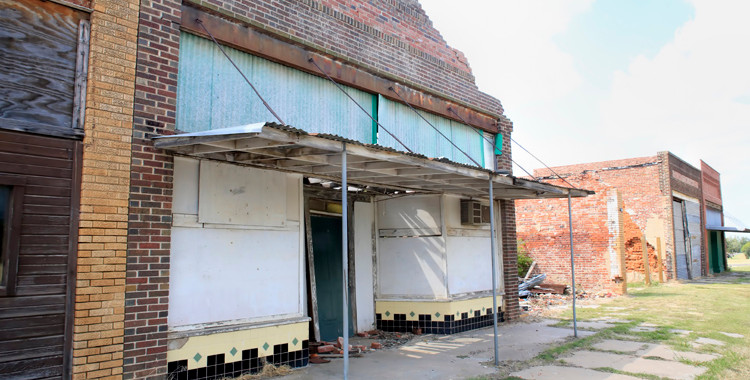Byars Oklahoma
- Richard Gorremans
- Jan 14, 2023
- 3 min read
Byars is one of the Ghost Towns in Oklahoma that was found totally by accident. We had been using a restaurant in Wanette as our staging area for a few weeks and learned of a town called Johnsonville that was nearby. After driving around the back roads for a bit we finally located the cemetery for Johnsonville behind a trailer home. The owners maintained the graveyard. For the next couple of hours we learned some of the history of the area and found out about Byars and its connection to Johnsonville.

Johnsonville was the first of the two communities to be founded. The town was named after Montford Johnson, a local cattle rancher. The community of Johnsonville never became a recognized town and had no post office.
Judge Thomas B. Johnston was the Chief Justice for the Chickasaw Nation and very active in the Johnsonville activities. The judge’s daughter, Katie, grew up and married Nathan H. Byars who owned a local ranch. After the wedding they lived in Johnsonville where they farmed and continued to raise cattle.

During the first years of their marriage a tract of land had been set aside for Katie Byars.It is not clear if it was done by the judge or the Byars themselves.In 1903 the plot thickens when the railroad investors became interested in the area around Johnsonville.
The Byars, Katie and Nathan, donated the land that had been set aside for Katie to establish a town square for a new township founded as Byars.A post office was immediately established in April of 1903.This was all done under protest of many of the residents of the Johnsonville community.
The Oklahoma Central Railway, as part of their East-West rail system, became the main contributor to the growth of Byars over the next few years.The OCR reached Byars in 1908.
As the early years progressed the local farming and cattle ranching sustained the community and by 1907 the population of Byars was 537.In 1906, Byars became incorporated. As their prosperity grew the population continued to grow to reach a peak population of 629 in 1920.New businesses were opened and a school district (which still exists) was established.
As time marched on the needs of the State changed as did the nation.Like so many of the rural communities of that time the residents were forced to relocate to more populated areas in order to survive. The population, by the 1970’s, had shrunk to 247. Stores and shops closed and were abandoned, many of them in ruins now.
Byars is definitely a community that you don’t just visit, you have to experience it. As we drove around streets it was easy to find the hub of activity for today’s residents.

The most modern thing on Gigi’s is the bars on the windows to keep out intruders. Old chairs, a bench, antique bikes on the roof and mop bucket were our assurance that Gigi’s was going to be an experience as soon as we pulled up. We went inside and were greeted by the owners and an old fashioned look for a country store that had a little bit of everything. As we talked a few locals came in left and some gathered outside. Felt like I was back in my own home town. All they needed was a chess board on a wooden barrel for the old timers.

As we left the store we found out why there was a mop bucket in front and no mop. Not only does the store cater to the local residents they provide a swimming hole for the local canine resident.


No one seemed to know why the bikes were on the roof, only that they had been there for a long time.
Today the residents of Byars are helping to keep the town alive. The school district covers grades K -8 and services 466 residents. The same population reported in 1940. The streets and ground area around the façade of businesses that still stand are well kept. The residents we talked to were friendly and we look forward to our next visit where we will delve deeper into the history and stories of Byars.
























